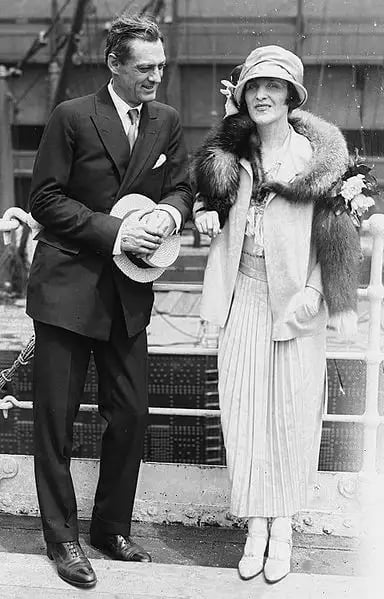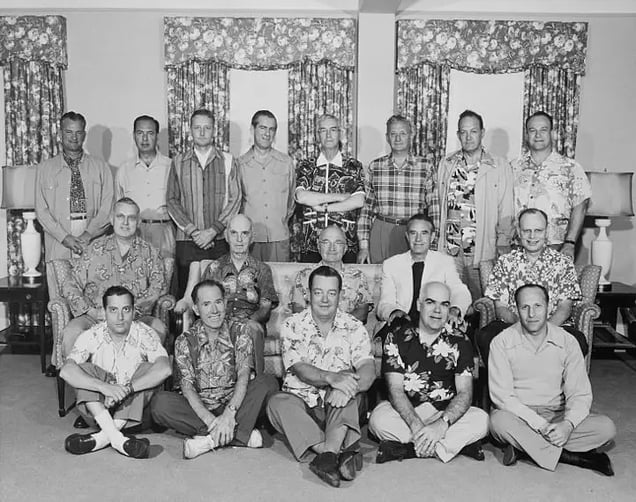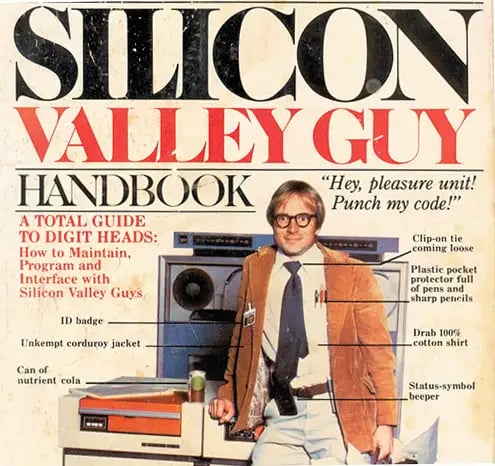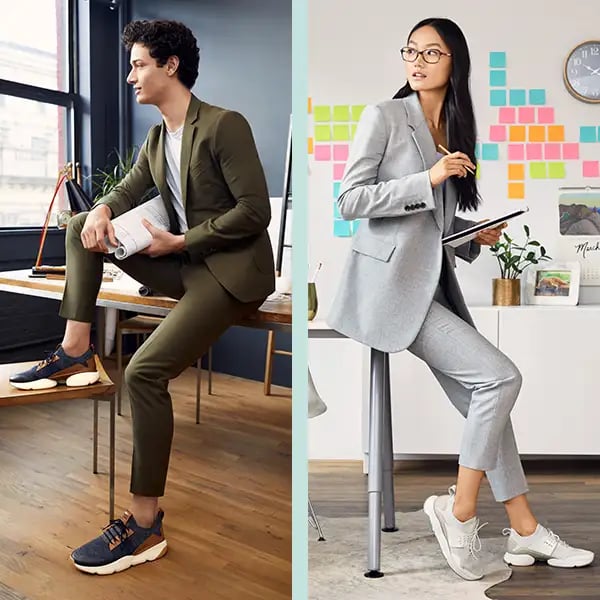| Sponsored by |  |
![]()
Look around at just about any office today and you’re bound to see a similar sight: dark jeans, tees for tops, and not a pleated pant to be found. It’s a far cry from previous decades where suits and dresses were the norm, but the times are changing — and they’re bringing the clothes with them.

The 21st century witnessed the fastest and wildest fashion changes in human history. In the span of a hundred years, we’ve gone from suits to sweats and back again.
Where did it all start? What spurred its progression? Did culture influence cubicles, or vice-versa? There are many wrinkles and folds in the story of office fashion — but if you look hard enough, there’s a thread that ties them together.
Formerly formal
In the 20th century’s earlier decades, formal wear wasn’t just limited to white-collar work. 1920’s America dressed up big time for restaurants, movies, and even travel. (Ever see pictures of your grandparents flying for the first time? Exactly.)

These corporate looks developed in response to the hustle and bustle of East Coast industry. New York City, the proverbial center of the world, had enough banks and firms alone to keep the jacket-and-tie industry afloat for centuries.
But while the city that never sleeps was setting the tone for what to wear to work, something quite different was developing across the country — something a little more chill.
On the West Coast, a flourishing garment industry and the timeless “California cool” of Hollywood and surf culture gave the Golden State — in particular, LA — serious sway over fashion trends. What the stars of Hollywood did, the country was bound to follow. That meant an adoption of a slightly more casual dress, even if it didn’t permeate the workplace just quite yet.
Office fashion would remain status quo for several decades, just waiting for the spark that would ignite the kind of culture shift rarely seen in American history.
And it came in the form of a small, floral button-up.
Floral Fridays and the Hawaiian Shirt
By the 1960s, most corporations had well-defined standards for office-approved clothing (Hint: still formal as heck.)
But suddenly, two things happened: In Palo Alto, budding tech giant Hewlett Packard allowed employees to ditch their suits on Fridays in favor of something slightly more comfortable, and in Hawaii, the Hawaiian Fashion Guild passed out floral shorts to government employees in the hopes to boost sales.
One named it “Casual Friday”, while the other opted for “Aloha Fridays” — we’ll let you guess who’s who.

Both arrangements made strong cases for more comfortable workwear. After all, employees seemed to like it, and a happy employee is good for office morale… and soon enough, Casual Friday would become Casual Everyday.
A denim giant has its say
It wasn’t long before nearly three-quarters of all offices in the U.S. had adopted a dress-down day. Many had also made the full transition from business formal to business casual.
If Casual Friday was the first cautious tiptoe onto the slippery slope of office fashion, the switch to business casual was the clumsy descent into the depths of *shudder* Cargo Shorts At Work.
And, unlike its suit-wearing counterpart, business casual was hard to define — or enforce. In short, it was an HR manager’s nightmare.
Someone had to step up. A silent protector of appropriate dress. A watchful guardian of what to wear. But who would answer the call? None other than the blue jean behemoth themselves: Levi’s.
But they didn’t do it out of some sort of fashion responsibility. See, Levi’s had a subsidiary called Dockers, and the khaki kids weren’t exactly thriving.
In an effort to boost sales, Levi’s penned “The Guide to Business Casual” which, unsurprisingly, was full of different outfits that just so happened to revolve around Dockers products.
The guide itself outlined a general definition of business casual, and one which is still in use today. Oh, and it made Dockers some serious money too. We’ll call that a win-win.
Silicon Valley strikes again
One place that Business Casual had already been adopted, appreciated, and aggressively abused was the Bay Area.
During the ’80s, Silicon Valley rose to prominence as a hotbed of technology, innovation, cultural disruption… and bad fashion sense.
Tech was all about breaking the rules, and it didn’t stop with their products. They broke everything — including dress codes. It made sense: Bay Area companies focused on results, not processes. That meant employees worked 80-hour weeks, got sh*t done, and didn’t care how they looked doing it.
Soon Silicon Valley’s poor fashion choices became a parody of itself with the likes of “Silicon Valley Guy.”

The descent continued throughout the ’80s, ’90s, and into the aughts. It wouldn’t be long before industry titans and upstart alike reinforced this idea. As the Zucks and Jobs of the world donned turtlenecks and sandals to build their digital empires, the rest of the country took notice.
For a while, this approach was largely contained to the tech industry, but the trend started rearing it’s uncombed head elsewhere in the early 2000s. As more companies took the “who cares how you look as long as you change the world” approach that Silicon Valley made so popular, business casual officially became business whatever.
Enter the fashion consultants.
Sprucing things up for $200/hr
Cut to current day. Zuckerberg proved a hoodie-wearing coder can make billions, but now even he’s tossing the sweatshirt for a more elevated look.
As telecommuting, WFH, and remote work continue to grow, the line between work and home is blurring. Employees want to be comfortable but still presentable… all without looking too overdressed.
Casual is largely universally accepted — hell, even big banks like J.P. Morgan Chase have started to tone down their dress codes — while also transforming into something a bit sharper.
Even the tech scene has begun to elevate its image (case in point: The Bezos Glo-Up).
That means consumers are calling upon brands like Cole Haan to fill this new niche with highly-versatile products that do it all. That means shoes, apparel, and accessories that have just the right amount of style to help you dress up or down, but are still comfortable enough to let you focus on your work (and not your foot cramps).

We’ve entered the age of All: Clothing that can do everything while still looking good. Today’s white-collar workers place a higher value on versatility, comfort, and functionality than strict fashion traditions.
It’s a tall ask, but hey… it sure beats another meeting full of ripped sweatpants.

